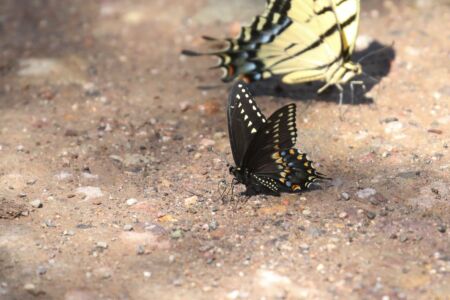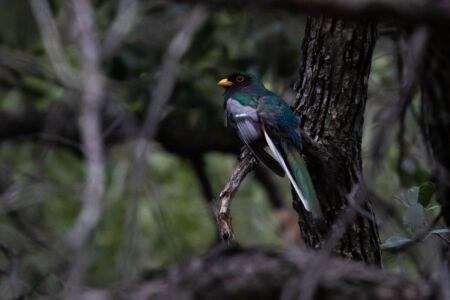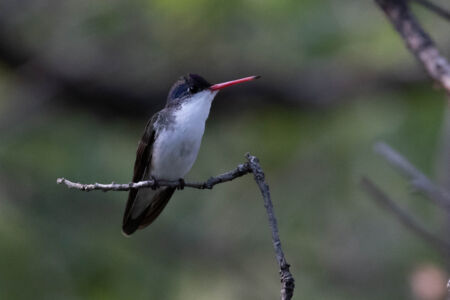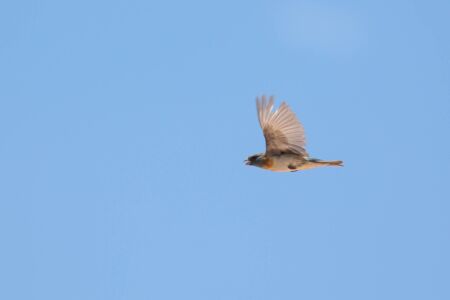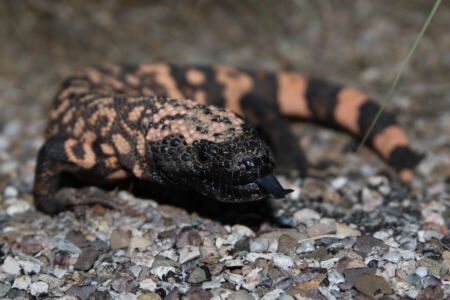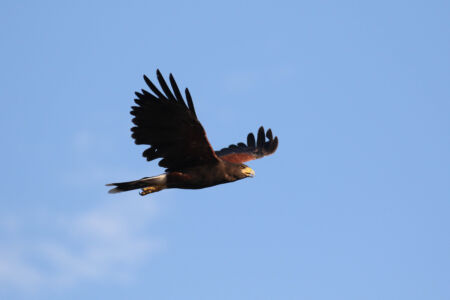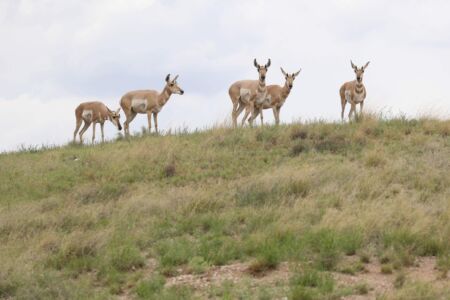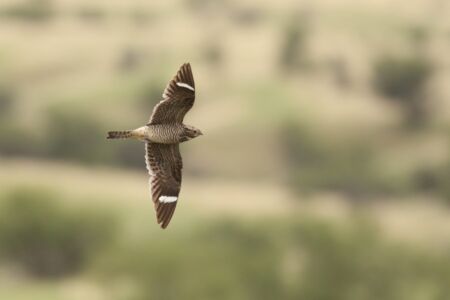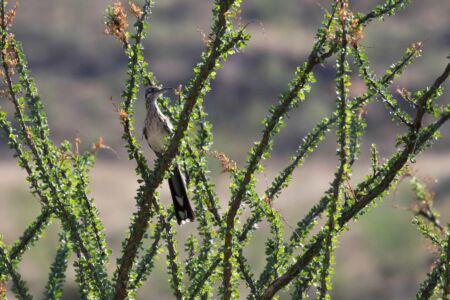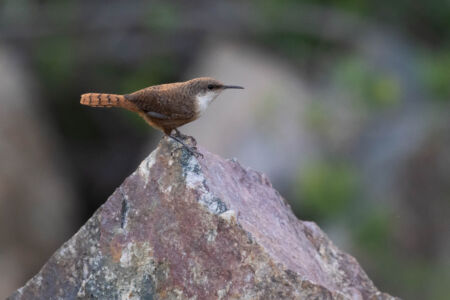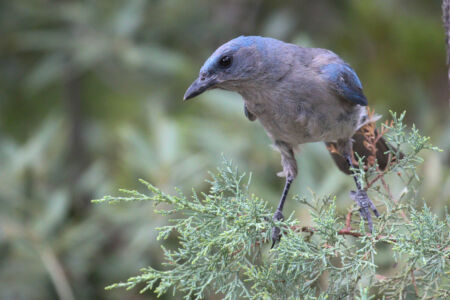TRIP REPORT: ARIZONA – 2019 August – Southeast Specialties

TOUR FOCUS
TRIP LEADERS
PRIVATE TOUR OPTION
This tour is available as a private trip for any size group. The tour cost will vary with the number of people and any custom requests.
TESTIMONIALS
Trip Report written by Alex Lamoreaux
Day 1 / August 11, 2019
Just after 1pm on August 11th I picked up Kisa, Mariana, and Andy from the Tucson International Airport, and we promptly set off on our birding adventure. Following a fun week guiding field trips at Tucson Audubon Society’s Southeast Arizona Birding Festival, I was very excited to spend the week exploring the region more thoroughly with my three clients. The midday sun was very hot in urban Tucson, and so heading to the higher elevations was a must…but not before a quick stop for some delicious tacos from a truck near the airport!
We made it through Tucson quickly, and started up the switch-backed highway which goes up Mount Lemmon on the northeast corner of the city. Giant Saguaro cactus and spindly, green ocotillo covered the rugged landscape and beautiful rock ‘hoodoos’ towered above us. The habitat slowly changed from lush desert to pine-oak forest, and our first destination was Rose Canyon Lake. We passed through the busy campground to find the lake also very active with humans, but the birding was good from the get-go.
We were immediately greeted by our first Southeast Arizona specialty… a spunky Painted Redstart! The redstart showed off its foraging agility by bouncing around the railings and walls of a bathroom at the parking lot, maintaining a high level of grace despite the micro-habitat it has currently chosen. Around the corner we hit a really nice warbler flock – our best of the whole week actually – that included Virginia’s, Black-throated Gray, Nashville, Hermit, and Wilson’s Warbler among more Painted Redstarts. Some of these species breed nearby, while others (like the Hermits) had just migrated from California.

Yellow-eyed Junco (Photo by Alex Lamoreaux)
This was a perfect representation of the birding conditions in Southeast Arizona in early August… lots of active, local breeders and a flush of recently-arrived migrants. The diversity is incredible. A few Cliff Chipmunks scurried around the forest. Getting closer to the lake, we spotted Lesser Goldfinches and Pine Siskins. Spotted Towhees and the regionally-endemic Yellow-eyed Juncos were plentiful. Western Bluebird, ‘Interior’ White-breasted Nuthatches, and Common Ravens all made appearances at close range. Acorn Woodpeckers and ‘Red-shafted’ Northern Flickers drummed and called from snags nearby. Turkey Vultures soared in the distance, and a light adult ‘Western’ Red-tailed Hawk was perched in a pine at eye-level. The only waterfowl on Rose Canyon Lake was a single female Mallard. Some fisherman caught a Common Slider turtle, and a Southwestern Fence Lizard was sunning itself on a rock.
On the walk back to the car, we once again scanned through the energetic warbler flock, getting better views of the previously-mentioned species as well as adding another regional specialty – a beautiful (if not also tailess) female Olive Warbler tending to her recently-fledged young! Eight Bushtit and 6 Pygmy Nuthatch also made nice showings, and we had brief views of our first Bewick’s Wren.
Heading further up the mountain, we spotted a few Rock Squirrels and had a really nice, close encounter with the stunning Abert’s Squirrel! These large tree-squirrels have tall ear tufts, a mostly white tail, and a red patch down the center of their back. We checked a pulloff known as Incinerator Ridge quickly, but activity was low…a Turkey Vulture and another group of Pygmy Nuthatches were the only birds detected. That was just as well, though, since it was about time to head back down the mountain. We did made one more stop at Hoodoo Vista and had an incredible, nearly eye-level view of an adult Zone-tailed Hawk cruising past! A Canyon Wren wailed off its unmistakable song, and some House Finches were perched nearby. Our reason for stopping here was to search for Black-chinned Sparrows and we managed to hear two singing off in the distance but didn’t have great views. Further down the mountain a Say’s Phoebe flew over the road at the Molino Basin.
Our next stop was to Aqua Caliente Park at the edge of suburban Tucson. A quick loop of the park provided a nice introduction to many of the common desert denizens of the region; Verdin, Hooded Oriole, Vermilion Flycatcher, White-winged Doves, Common Raven, and ‘Arizona’ Bell’s Vireo. Broad-billed Hummingbirds were zipping around, and were the first of many hummingbirds we’d see this week. Broad-billed is the most common in the region, and found in the widest variety of habitats.
Gila Woodpeckers, Curve-billed Thrashers, and Lesser Goldfinches also gave nice looks, and a flock of at least 8 ‘Desert’ Purple Martins flew overhead calling softly. These large swallows nest in Saguaro cactus cavities! As we left the park, a beautiful pair of Harris’ Hawks were perched on a telephone pole right along the road and gave us incredible views at close range. These desert raptors are uncommon in the region, and were the only ones we saw all week – but they more than made up for that by being very cooperative for photos. The size difference between the male and the larger female was quite evident.

Gila Monster (Photo by Alex Lamoreaux)
We ended the first evening exploring a small section of Saguaro National Park, at the Rincon Mountain Visitor Center. Almost immediately upon arrival, I spotted a Gila Monster along the edge of the road! Woah! These huge colorful lizards are the largest native lizards in the United States and they are also quite venomous. We watched the monster slowly crawling along, and snapped off some nice photos at close range. Multiple Black-throated Sparrows showed off nicely, and some Phainopepla flew past.
As the sun began to set, Lesser Nighthawks were flying overhead catching bugs. Gilded Flickers, Curve-billed Thrashers, and Cactus Wrens sang and called all around us. After dark we could hear a Barn Owl screeching nearby, while a Great Horned Owl hooted softly in the distance. At least 6 Common Poorwill called around us. Desert Cottontails became quite active after dark, and we also found a few Red-spotted Toads. Using a small blacklight we turned up a few tiny Stripe-tailed Scorpions. Cruising back towards Tucson a Coyote ran across the road and then we spotted a few Black-tailed Jackrabbits standing guard at the edge of our headlight’s range. Our first day had come to an end and we were all ready to hit the sack and rest up for the busy week ahead of us.
Day 2 / August 12, 2019
Early Monday morning we set off along I-10 east across the desert. Our first major birding stop was going to be the town of Saint David, but it was a scenic hour drive east from Tucson. The desert here is busy with wildlife this time of the year, and a 4-lane highway interesting that action is bound to cause some issues… we spotted American Badger, Coyote, a woodrat species, and various birds as roadkill, sadly. Flocks of White-winged Doves set off for their daily business, and Turkey Vultures slowly took to the skies – no doubt searching for some of the unfortunate roadkill we had observed.
Just after 6am we arrived in Saint David. This small community has, for whatever reason, provided nesting habitat for an isolated population of Mississippi Kites for many years. It was still early, but we quickly found an adult kite perched in the snaggy tips of trees on the east side of town! Soon after jumping out of the car for better photos, we noticed a recently-fledged juvenile perched nearby and then a second adult came ripping in with breakfast – a tiny baby bird! The kites showed off nicely, and we started searching for other birds in the immediate vicinity. Highlights were Great-tailed Grackle, Northern Cardinals, Verdin, Gila Woodpecker, and a Summer Tanager.
Down the road further, near some small ponds, we spotted a hybrid Mallard x Mexican Duck and had nice views of Inca Doves, Eurasian Collared-Doves, White-winged Doves. Black-chinned and Broad-billed Hummingbirds put in brief showings, and 2 Vermilion Flycatchers were catching the early morning rays of light – shining red like little flames. A small group of 3 Bushtit and some Verdin were also seen. ‘Northern’ Yellow Warbler and Lazuli Bunting were singing nearby, and both Western and Summer Tanagers perched up nicely. A juvenile Brown-headed Cowbird was being fed by one of the Vermilions…
Heading north out of town we stopped briefly to enjoy a family group of Swainson’s Hawks and also spotted a Blue Grosbeak, some Western Kingbirds, and a Northern Mockingbirds. One Lucy’s Warbler made a brief appearance before disappearing back into the mesquite. House Sparrows, Rock Pigeons, and Eurasian Collared-Doves were plentiful in Benson, right before we got back onto the highway to head further east. Turkey Vultures and a few ‘Fuerte’s’ Red-tailed Hawks were spotted along the highway, along with out first Chihuahuan Ravens of the trip! A small group of Lesser Nighthawks was also seen aerially-hunting above the highway.
By 8:00am we were in Willcox, and planned to spend the rest of the morning slowly birding around the Twin Lakes Golf Course and the infamous Lake Cochise. We spent just under 3 hours exploring the area and turned up a nice list of 56 species. We first did a slow cruise of Fairway Drive, then checked the marshy golf course ponds, then made a large loop of the lake. The birding was excellent, and we turned up some really nice birds. Fairview Drive had a nice flock of Gambel’s Quail and the brushpile had an adult Greater Roadrunner skulking about. Multiple “Lilian’s” Eastern Meadowlarks were perched up and watching us. This paler subspecies is likely a good candidate for a split.
The golf course ponds were really hopping, and we spotted both Cinnamon and Blue-winged Teal plus had a surprise flyover pair of Green-winged Teal! A few Mexican Ducks, Northern Shovelers, and 3 Ruddy Ducks rounded out our waterfowl list here. At the end of the ponds I flushed up a covey of 4 Scaled Quail which we all had good, though brief, views of. Another Greater Roadrunner was there, and some American Coots were on the ponds. Cassin’s and Western Kingbirds were plentiful, and we watched a singing Blue Grosbeak.
A nice collection of Black-crowned Night-Heron (of various ages) were hiding around the marshy edges. Multiple Loggerhead Shrikes were perched in the vicinity. The swallows were numerous; mainly Barn and Tree but we also pocked out a few Northern Rough-winged and one Bank. Curve-billed Thrasher and Black-tailed Gnatcatcher were heard but not seen. Other highlights included Bullock’s Oriole, Northern Mockingbird, Lazuli Buntings, and Common Yellowthroats. I had a brief view of a Nashville Warbler and a single Great-tailed Grackle. Black-tailed Jackrabbits lopped through the sedges and grass as we birded around the area.

Alex and the group sorting shorebird IDs at Lake Cochise (photo by Sally Ingraham)
Next we made our way over to the lake (which is more of a large salt pan with a thin layer of water). The shorebirds and other waterbirds were in excess. We had 12 species of shorebirds, including 40 Black-necked Stilt, 450 American Avocet, 2 Killdeer, 110 Long-billed Curlew, 1 Marbled Godwit, 1 Stilt Sandpiper, 70 Baird’s Sandpiper, 25 Least Sandpiper, 40 Western Sandpiper, 300 Wilson’s Phalarope, 1 Long-billed Dowitcher, and 2 Lesser Yellowlegs. We spent a while slowly circling the pond scrutinizing the shorebirds, and chatting about best approaches to identifying them all.
It was hot, but the birding and other animals kept us razor-focused. Four Great Blue Herons, 1 Great Egret, and 25 White-faced Ibis were around the pond too. A definite highlight was watching one of the Great Blues capture a HUGE Western Tiger Salamander out of the pond! We had brief views of a Spotted Ground Squirrel alarm-calling at us, then dropping into its burrow. A few Mexican Ducks, Mallards, and likely hybrids of the two made brief appearances before flying off to the golf course ponds. An adult Peregrine Falcon made a quick pass over the pond, flushing all the shorebirds up into quite the spectacle. This was a continuing falcon here, with a broken leg drooping down under its sleek body…possibly contributing to the fact that we didn’t see it catch anything.
Scanning the sky around us also produced scattered flocks of migrating Lark Buntings; chunky sparrow-type birds many of which were black males with large white shoulder patches. Huge numbers of Lark Buntings overwinter in the region, and these were at the forefront of migrants coming to the area. One Great-tailed Grackle flew over, heading towards downtown Willcox. We were headed that way too – for lunch at a nice Mexican restaurant.
After lunch we made our way southwest towards our second Sky Island – the spectacular Chiricahuas. Weaving our way down through desert and seemingly arid farmland, we spotted our only Mule Deer of the tour; 2 adult with 2 fawns. A few Greater Roadrunners and “Fuerte’s” Red-tailed Hawks were along the roads, and other roadside sightings included American Kestrels, Cassin’s and Western Kingbirds, and Blue Grosbeaks.
The visitor center area at Chiricahua National Monument was a nice birding break during the midday heat. We quickly racked up a nice list, with multiple lifers for my guests. Acorn Woodpeckers were noisily calling from the oaks, and Mexican Jays were being very cooperative often perching within feet of us. We spotted our first Arizona Woodpecker here, the only brown woodpecker in the country and a species only found here in Southeast Arizona. Hutton’s Vireos, Plumbeous Vireo, handsome Bridled Titmice, 8 Bushtit, and White-breasted Nuthatches all put in nice appearances, and a Canyon Wren sang from some boulders nearby. We also had brief views of a Bewick’s Wren. American Robin, Black-throated Gray Warbler, Painted Redstart, and a single Blue Grosbeak rounded out our list here.

Alex and the group in Pinery Canyon (photo by Sally Ingraham)
We continued our journey into the Chiricahuas, with our plan being to cross up over Onion Saddle and drop down into Portal where we’d spend the next two nights. Along the way towards the summit we spotted a herd of “Coues’s” White-tailed Deer the regionally endemic subspecies here, and 12 “Gould’s” Wild Turkeys were foraging with them. Our path towards Onion Saddle followed Pinery Canyon, and the habitat slowly changed from grasslands and oaks, to a nice mixture of pines and oaks. The birdlife changed too, and we started picking our Western Wood-Pewees, Pacific-slope Flycatchers, and Plumbeous Vireos along the road.
Up at the Pinery Canyon ‘Campground’ we parked and jumped out to explore more thoroughly. Here we hit the jackpot with many great birds – 2 adult Buff-breasted Flycatchers, 3 Mexican Chickadees, 3 Violet-green Swallows, 5 Brown Creepers, 10 Yellow-eyed Juncos, 2 Grace’s Warblers, a Hermit Warbler, and a beautiful male Red-faced Warbler. The chickadees showed nicely, and not only is that species only found in Southeast Arizona but it as far as its US range is concerned – it is only found here in the Chiricahua Mountains! Another regional endemic seen here was the “Chiricahua” subspecies of Mexican Fox Squirrel, and we had a few notable butterflies including Dull Firetip., Taxiles Skipper, and Arizona Sister.
Further along, as we reached Onion Saddle, we spotted a Greater Pewee along the road and compared its fieldmarks to nearby Western Wood-Pewee and talked about its differences from Olive-sided Flycatcher. A Band-tailed Pigeon made a quick flyby, but wasn’t seen by everyone. More Yellow-eyed Juncos, Spotted Towhees, and Lark Sparrows were along the roads.
Dropping down into Cave Creek Canyon, our final major destination for the day was for a stake-out Berylline Hummingbird along the Crystal Cave Trail. This rare, vagrant hummingbird had been found a few days previously and locals put up a hummingbird feeder in the woods which miraculously started attracting not only the Berylline but also a beautiful adult Violet-crowned Hummingbird.
We made the quick hike out to the spot, and immediately upon coming into view of the feeder I spotted the adult Berylline sipping sugar-water. These are fairly large hummingbirds with a purple-red tail, brownish-emerald mantle, and buff belly. Although the Berylline was much more rare, the adult Violet-crowned sort of stole the show with its striking brown and white plumage and shining violet head. Berylline has become an annual visitor to Southeast Arizona, and I believe it has bred in the region previously. Typically they show up in the Huachuca Mountains, but we were quite happy to nail down this vagrant here in the beautiful Chiricahuas. Some locals birders on scene were very happy too, and had set up lawnchairs and were enjoying ‘wine and Berylline’…maybe a little too much.
The sun was setting, so we made our way to the Portal Peak Lodge for the night. Along the way we could hear the unmistakable ‘squeaky-toy’ calls of a few Sulphur-bellied Flycatchers (a species we would more thoroughly enjoy the following day).
The rustic, cowboy feel of the Portal Peak Lodge really sets the mood for this region, and we had dinner there and went over our species checklist. After dinner we made a quick loop for nocturnal birds, hearing a Common Poorwill near the Cave Creek Ranch and then enjoying a wonderful 5 minutes with a cooperative Whiskered Screech-Owl at the Sunny Flat Campground! Striped Skunks were out in force, with 6 seen along the roads! Back at the lodge I broke out my EchoMeter bat detector and recorded 9 different species hunting overhead! Moth diversity was also off the charts around the lights! There so much wildlife to see here, it can be hard to find time to sleep!

Whiskered Screech-owl (photo by Alex Lamoreaux)
Day 3 / August 13, 2019
The South Fork trail of Cave Creek Canyon was our first destination for today, with the hopes of hearing or seeing an Elegant Trogon. The birding was slow to start, with the sun taking forever to reach down into the canyon and we didn’t turn up any trogons. Other birds soon made up for it though, and we had a great view of another Red-faced Warbler and our first Blue-throated Mountain-Gems of the tour! These massive hummingbirds breed along the South Fork, and two males were busy fighting over a female. Multiple Brown-crested Flycatchers were in the sycamores overhead and at one point chased off a Sulphur-bellied Flycatcher. More Bridled Titmice, Painted Redstarts, and a family-group of Grace’s Warblers were also nice to see. We saw another “Chiricahua” Mexican Fox Squirrel here too. Other birders were present, also trying to hunt down a trogon, but it was a no-show for everyone we talked to.
We made our way back towards Portal for breakfast, but made a quick stop at the Sunny Flat Campground and had our best views of Sulphur-bellied Flycatchers here plus nice views of another Blue-throated Mountain-Gem feeding from a century-plant flower.
After breakfast we hit the Primrose Trail near the Southwest Research Station since this can often be a good area for Montezuma Quail. Alas the quail were absent, although we did hear a distant male calling from the slopes nearby. Not bad, considering this species is notoriously difficult and unlikely to be seen. Black-chinned Hummingbird, Hutton’s Vireos, more Mexican Jays, and a Black-throated Gray Warbler were other highlights here.
The sun was heating things up and some butterflies were gathered at the moist dirt near a small stream, and we photographed the massive Two-tailed Swallowtail, Black Swallowtail, Arizona Sister, Echo Azure, and Bordered Patch. We checked the gardens at the Southwest Research Station and picked up Variegated Fritillary, Desert Checkerspot, Orange Skipperling, Cloudless Sulphur, and Sleepy Orange. Various dragonflies were also present, most notably Flame Skimmer. Yarrow’s Spiny Lizard are common in this area, and we took the time to photograph a cooperative one here. The birding was on the slower side…but it was pretty hot and calm out. We also spotted a Sonoran Spotted Whiptail lizard here.
Back to Portal for lunch, and then off to some easy birding in the shade – watching massive feeder arrays. First up was Dave Jasper’s yard in Portal. We spent nearly an hour here, and the birding was excellent. We spotted 24 species highlighted by Gambel’s Quail, Broad-tailed Hummingbirds, Ladder-backed Woodpeckers, Woodhouse’s Scrub-Jays, Verdin, Cactus Wrens, Black-throated Sparrows, Canyon Towhees, Hooded Orioles, Bullock’s Orioles, Northern Cardinals, and Pyrrhuloxia. Multiple Harris’ Antelope Squirrel also came in for jelly and seeds!
Next up was Bob Rodriques’ yard on the outskirts of town. We had 16 species here highlighted by more Gambel’s Quail, Greater Roadrunner, Bell’s Vireo, Curve-billed Thrashers, Chihuahuan Raven, and Blue Grosbeaks.
Just after 2:00pm we arrived at the George Walker House bed & breakfast lodge, further up into the mountains from Portal. We spent just over an hour here, and had a great time watching the hummingbird feeders – the most active feeders we would visit this week. Seven hummingbird species were present in good numbers including Rivoli’s, Blue-throated, Black-chinned, Broad-tailed, Rufous, Calliope, and Broad-billed. Bridled Titmice, White-breasted Nuthatches, Canyon Wren, House Finches, Chipping Sparrow, and Black-headed Grosbeaks were also nice to see. The birding was active and exciting! The birds certainly made up for the obnoxious and condescending groundskeeper here. Red Admiral and Northern Cloudywing were butterfly highlights here.

Crossing Onion Saddle (photo by Sally Ingraham)
The remainder of the day was spent up near Onion Saddle, in the upper reaches of the Chiricahuas. We parked along the mountain road and started walking up the road. In a halfmile stretch we turned up 22 species including 6 Band-tailed Pigeons (including one fresh juvenile), 12 White-throated Swifts, a heard-only Northern Pygmy-Owl, another adult Buff-breasted Flycatcher, 10 Steller’s Jay, 2 Mexican Chickadee, 14 Violet-green Swallows, 4 Pygmy Nuthatches, 5 Rufous-crowned Sparrows, 5 Western Bluebirds, one Hepatic Tanager, and 12 Spotted Towhee. The undeniably highlight here, though, was a flock of 15 Red Crossbill! We watched the flock, of mostly juveniles, foraging in douglas-fir and noisily fussing with one another. Some excellent Sky Island birding!
We rushed back to Portal for dinner, but accidentally missed the 7pm cutoff so were forced to settle for snacks and water. I blame a beautiful Tucson Blonde Tarantula blocking the road for our late arrival, and missed dinner…. A short night-drive in the desert outside Portal turned up Black-tailed Jackrabbits, 2 Coyote, and a Barn Owl. Lots of moths were around the lodge lights.
Day 4 / August 14, 2019
Inca Doves greeted us first thing the next morning, and we loaded up the truck to head out of town. We made one more stop at the South Fork of Cave Creek Canyon to try (and fail) for trogon. Hermit Thrush, more Sulphur-bellied Flycatchers, another heard-only Northern Pygmy-Owl, 2 Arizona Woodpeckers, and a cooperative Brown Creeper were highlights here.
After a quick breakfast we headed out of Portal, saying goodbye to the Chiricahuas. For the next few hours we zig-zagged back and forth across the border of Arizona and New Mexico, to the delight of state-listing birders on board (myself included). Lark Bunting flocks were winging their way southward at multiple stops. Raptors were numerous with Northern Harrier, Red-tailed Hawk, Swainson’s Hawk, and American Kestrels noted multiple times, in addition to a quick flyover Prairie Falcon! Greater Roadrunners made a few appearances.
At the ‘willow tank’ which has now been renovated into a really nice little park and wetlands, we made the quick loop around the impoundment and had 24 species including Spotted Sandpiper, Killdeer, Loggerhead Shrike, Verdin, Black-throated Sparrows, Canyon Towhee, Yellow-headed Blackbirds, Yellow Warbler, and another Pyrrhuloxia.
From there we had an hour drive to Douglas, grabbed gas, and continued down the road. We passed through the mining town of Bisbee, ogling at the massive hole dug into the Earth, and once again – continued down the road. Our next Sky Island mountains, the Huachucas, were next on the itinerary, but first we did some birding outside Sierra Vista. Along Moson Road I had a staked-out flock of Lazuli Buntings, and they were right where I left them…. A huge flock of over 200! Massive numbers of Lazulis overwinter in the region, and this was one of the first flocks to reach the area, dominated by adult males to our delight. We spent 20 minutes watching the flock move from a weedy field to some desert scrub, offering awesome flight shots.
The Sierra Vista EOP (waste water site) was a brief stop, but we had Bank Swallow, Cinnamon Teal, Willow Flycatcher, Say’s Phoebes, Least Sandpipers, Yellow-headed Blackbirds, and more Lazuli Buntings as highlights. Black Saddlebags was a new dragonfly species for the trip, and a Coyote was hunting the weedy fields.

Immature male Broad-billed Hummingbird (photo by Alex Lamoreaux)
After a nice lunch (and break from the heat) in Sierra Vista, we set off for Ramsay Canyon. The Nature Conservancy property in the canyon was closed for the day, but we were mostly just here to check the hummingbird feeders at the Ramsay Canyon Inn. Our first Anna’s Hummingbirds were here, along with Rivoli’s, Black-chinned, Broad-tailed, Calliope, and Broad-billed. A weird looking White-breasted Nuthatch was at the suet feeders, but I realized it was just a super fresh juvenile with a funky plumage that doesn’t last long before their first molt. Great views of Lesser Goldfinch and Black-headed Grosbeak were had here as well.
By 3:45pm we were up Miller Canyon, with the goal of spending the rest of the afternoon watching the large hummingbird feeder array at the Beatty’s Guest Ranch. This is a famous feeder setup, well known to attract interesting hummingbird vagrants. Nothing too crazy was visiting this month, but we still had a great time watching the hummers and talking to Beatty Junior about his dogs and wildlife sightings on the property over the years. Hummingbirds here included (at the very minimum) 4 Rivoli’s, 10 Black-chinned, 1 Anna’s, 2 Broad-tailed, 4 Rufous, 8 Broad-billed, and one super cooperative adult 1 Violet-crowned. Our first Arizona Gray Squirrel was here as well as more Coues’s White-tailed Deer. We also found scat from “Arizona” Gray Fox.
We set off for our hotel in Sierra Vista, and called it a day a bit earlier than we had been – everyone was pretty beat from a long week of dawn to dusk birding. However, we weren’t quite done for the day, since everyone agreed it would be fun to head out for some nocturnal birding after dinner. At 8:30pm we went up Carr Canyon, and cruising the winding road up the canyon we had multiple Common Poorwill all above 5,000 feet elevation, including one male which gave us really nice views and we also heard a Mexican Whip-poor-will although we never managed a visual on that one. Another notable sighting here were dozens a massive Sooty Longwings. These marbled-gray katydids average 3 inches long, and are most active on hot nights.
Day 5 / August 15, 2019
Our 5th day kicked off with breakfast at the hotel, and then heading up nearby Hunter Canyon. Our entire morning was set aside to search for one of the continuing Rufous-capped Warblers that have nested in the lower portion of the canyon for the past few years. These striking rufous and yellow warblers, which posture themselves more like wrens with their tail held high, used to be vagrants to the region, but they seem to have taken a likening to Hunter Canyon and have been breeding here since at least 2013. I felt confident that we’d find one of the warblers, but knew it could end up being quite the waiting game… sitting along the creek running down through the canyon, and letting the warbler decide when it would show itself.
True enough, it took over 1.5 hours, but the warbler did show itself – and in spectacular fashion! We had beautiful, unobstructed views of the warbler for over 15 minutes as it worked its way down the creek bed, foraging in the shrubs.

Rufous-capped Warbler (photo by Alex Lamoreaux)
Other notable sightings included multiple hummingbird species, Arizona Woodpecker, Olive-sided Flycatcher, Dusky-capped Flycatchers, Greater Pewee, Hutton’s Vireo, Bushtits, Bewick’s Wren, Phainopepla, Rufous-crowned Sparrows (feeding young), a female type Scott’s Oriole, MacGillivray’s Warbler, Wilson’s Warbler, and very active flocks of Western Tanagers and Black-headed Grosbeaks. We also spotted Clark’s Spiny Lizard, Yarrow’s Spiny Lizard, and the very range-restricted Golden Banded-Skipper in the canyon.
Ash Canyon Bed & Breakfast was next up on the itinerary, and is another famous hummingbird house. The highlight here was seeing multiple Lucifer Hummingbirds – immature and adult males. The Lucifers came in to the feeders multiple times, to our delight. Other notable birds included Gila Woodpeckers, Ladder-backed Woodpeckers, Bewick’s Wrens, and 40+ Lesser Goldfinches. Eufala Skipper and Gulf Fritillary were new butterflies for the trip.
This concluded our birding in the Huachucas, and we set off for the Sonoita and Patagonia region near the Mexican border. Along the wauy we spotted a few more “Lilian’s” Eastern Meadowlarks and various raptors. The beautiful, expansive Las Cienegas National Conservation Area was next up, and we hit the ground running with sightings of Say’s Phoebe, Vermilion Flycatcher, Western Kingbirds, and Northern Mockingbirds. The real highlight, though, was seeing and hearing a few special grassland sparrows with Botteri’s Sparrow, Cassin’s Sparrow, and Grasshopper Sparrow being a the top of the list.
Additional notable species included 25+ Lark Sparrows, Bullock’s Oriole, Willow Flycatcher, Cassin’s Kingbirds, Horned Larks, Verdin, and Common Raven. Unfortunately the Burrowing Owl family known to reside at a large (reintroduced) Black-tailed Priairie Dog colony were absent, but the prairie dogs were present and active! Another special mammal sighting was seeing a dozen “Sonoran” Pronghorn – an endangered subspecies of Pronghorn restricted to a few reserves in Southeast Arizona and Northern Mexico.
Most US birders have heard of the “Patagonia Picnic Table Effect” and that idea of one rare bird attracting birders who in turn find more rare birds originated at a small, easy-to-miss roadside rest area just south of the town of Patagonia. We made a brief stop here, and were immediately greeted by an adult Gray Hawk soaring overhead. These tropical raptors can be quite common along the riparian corridor here, and we were all smiles after seeing this one however brief it was. Yellow-breasted Chat, Bell’s Vireo, and Varied Bunting were busy singing nearby, but it was VERY hot and we were anxious to jump back into the AC-cooled SUV.
Our last stop for the day was in Tubac, Arizona. We birded the De Anza Trail along the (mostly dried-up) Santa Cruz River. We had 39 species here highlighted by 4 Yellow-billed Cuckoos, four species of doves including Common Ground Dove and Inca Dove, Green Heron, 2 begging juvenile Zone-tailed Hawks, 2 Great Horned Owls, 2 Black Phoebe, 3 Tropical Kingbirds among Western and Cassin’s, 16 Phainopepla, 2 Abert’s Towhee, at least 9 Yellow-breasted Chats, 4 Song Sparrows, 1 Lucy’s Warbler, and a nice assortment of other southwestern songbirds. Woodhouse’s Toad and a huge Colorado River Toad were nice to see, and on the way out we nearly hit a Collared Peccary/Javalina with the car…luckily I braked quick enough when the hog darted out into the road!
Heading north towards Green Valley we encountered our first border patrol checkpoint, and were quickly ushered through no worse for ware. Dinner was at the nice bar inside our hotel, and then we all crashed for the night… well maybe not all of us. I was antsy to explore, and set out across the desert roads where I turned up a nice flock of Lesser Nighthawks and a “Sonoran” Gopher Snake. Ok, now it was time for bed.
Day 6 / August 16, 2019
Our last full day… we planned to spend the majority of it exploring our final Sky Island, the beautiful Santa Ritas. The predominant birding destination here is Madera Canyon, and sure enough that was up first for the day. We slowly wandered through the oak and sycamore-lined canyon in search of what was becoming our #1 nemesis bird: Elegant Trogon. Alas, we spent 2 hours roaming the trails and road from the Madera Picnic Area to the Amphitheater and didn’t turn up our golden bird. Despite that failure, it was really good birding with highlights being a subadult Golden Eagle, 14 Acorn Woodpeckers, 2 Dusky-capped Flycatchers, 4 Sulphur-bellied Flycatchers, 8 Mexican Jays, 6 Bridled Titmice, 9 Phainopepla, 6 Rufous-crowned Sparrows, a Black-throated Sparrow, 3 Painted Redstarts, and great looks at 3 Hepatic Tanagers (finally). Rock Squirrels, Arizona Gray Squirrels, and “Coues’s” White-tailed Deer were plentiful. Pipevine Swallowtail was seen well.
Box Canyon was up next, and despite the heat we had some nice sightings here. This canyon is very different from Madera, being much more arid and dominated by lush, low-growing plants like ocotillo, various agave, and cactus. We turned up 34 species including another adult Gray Hawk, various hummingbirds, 3 “Western” Warbling Vireos, Rock Wrens, Cactus Wrens, Canyon Wrens, 18 Phainopepla, 2 Hooded Orioles, our best views of Scott’s Oriole (an adult), stunning male Summer tanagers, 2 Varied Buntings, and the icing on the cake – a family group of 5 Black-capped Gnatcatchers! These gnatcatchers used to be vagrants to the region, but have become fairly regular nowadays and the Santa Ritas are ground zero for sightings. Red-spotted Admiral and some sort of buckeye were new butterfly species for us, and we also turned up a Sonoran Spotted Whiptail lizard.
We enjoyed lunch and cold beverages in Green Valley, and also found an Ash-throated Flycatcher and a Black-tailed Gnatcatcher there. After that – back to Madera Canyon for trogon and some other loose ends. Our first stop was to the Proctor Road area where we wandered around the desert scrub at the base of Madera Canyon. It was hot and dry, but the birding was surprisingly good with 24 species found including our first good views of Rufous-crowned Sparrow. Two Common Ground Doves were calling, and various flycatchers showed well. This spot also produced our best views of Varied Buntings, including one male grabbing bugs out of a spider web – no doubt to take back to begging juveniles fresh out of the nest!
An hour spent under the porch of the Santa Rita Lodge was productive, and kept us dry as a monsoon passed through the region. We spotted 18 species here, coming to the feeders. Highlights were 17 “Gould’s” Wild Turkey, five species of hummingbirds, and Plumbeous Vireo.

Elegant Trogon (photo by Alex Lamoreaux)
Finally, we spent the rest of the afternoon birding the Madera Picnic Area stretch searching for the elusive trogons. About 200 pairs of Elegant Trogons come to the Sky Islands of Southeast Arizona to nest in sycamore cavities, but the majority have left by August. I had faith we would turn one up here, and lucky for us I spotted a handsome male after about 30 minutes of walking around. For the next 30 minutes we kept up with the trogon as it flew from perch to perch, in search of large insects to snack on. The views were great, and everyone was all-smiles! Afterwards we spotted a pair of Golden Eagles soaring overhead, and had a nice view of another Arizona Woodpecker.
The grand city of Tucson provided our lodging for the last night of the tour, and we had a great dinner in “old” downtown Tucson.
Day 7 / August 17, 2019
Our final day had finally come. Kisa had to be at the airport early, but Andy, Mariana, and I were able to sneak in one last birding foray before they too had to depart. We decided to explore Sweetwater Wetlands, a well-known water treatment plant with restored wetland habitat right near downtown Tucson. In just under 2 hours we racked up a nice list of 41 species here which included 5 Mexican Ducks, 1 Blue-winged Teal, 30 Gambel’s Quail, tons of White-winged and Mourning Doves (150 of the latter), Greater Roadrunner, 5 Green Heron, 3 Cooper’s Hawks (probably the most common breeding raptor species in Tucson), American Kestrel, 4 Black Phoebe, 4 Vermilion Flycatcher, 3 Tropical Kingbirds, 8 “Desert” Purple Martins, another Black-tailed Gnatcatcher, 3 Marsh Wren, 4 Abert’s Towhee, and lots of Yellow Warblers and Common Yellowthroats.
Dragonflies were plentiful and we found Blue Dasher, Red Saddlebags, and Spot-winged Glider which were new for the trip. Queen butterfly was nice to see, as well as Western Whiptail lizard and Desert Spiny Lizard. A few (introduced) Red-eared Slider turtles were also new for the trip. Some very nice last-minute additions and overall a great place to explore for naturalists visiting the region. I took Andy and Mariana to the airport, and there our trip had come to an end.
Throughout the course of the week we had found nearly 300 species of animals including 183 species of birds, 31 species of mammals, 16 herps, 34 butterflies, 10 dragonflies and damselflies, a whole bunch of moths, and a handful of other interesting insects. I can’t wait to get back out there next year!




